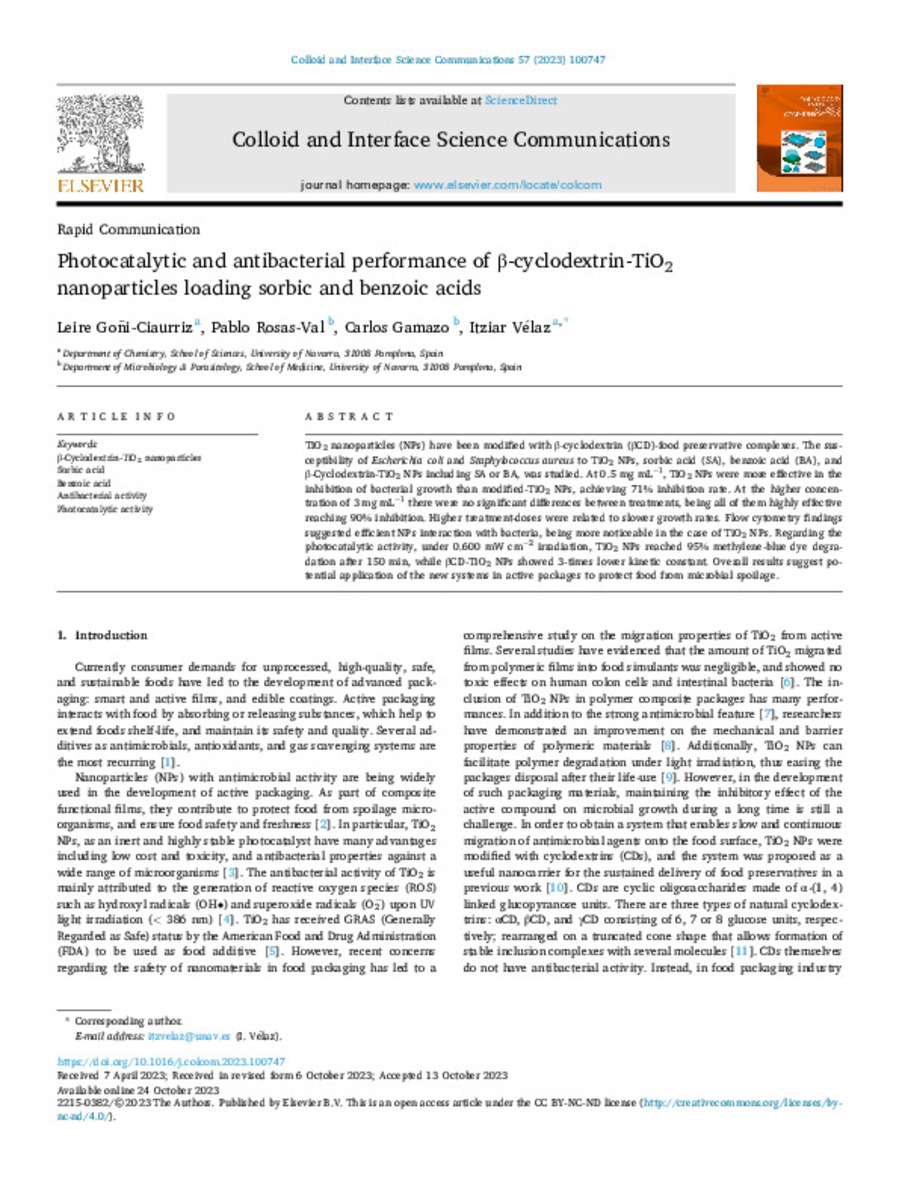Photocatalytic and antibacterial performance of β-cyclodextrin-TiO2 nanoparticles loading sorbic and benzoic acids
Keywords:
β-Cyclodextrin-TiO2 nanoparticles
Sorbic acid
Benzoic acid
Antibacterial activity
Photocatalytic activity
Note:
This is an open access article under the CC BY-NC-ND license
Citation:
Goñi-Ciaurriz, L. (Leire); Rosas-Val, P. (Pablo); Gamazo, C. (Carlos); et al. "Photocatalytic and antibacterial performance of β-cyclodextrin-TiO2 nanoparticles loading sorbic and benzoic acids". Colloid and Interface Science Communications. 57, 2023, 100747
Statistics and impact
0 citas en

0 citas en

Items in Dadun are protected by copyright, with all rights reserved, unless otherwise indicated.










